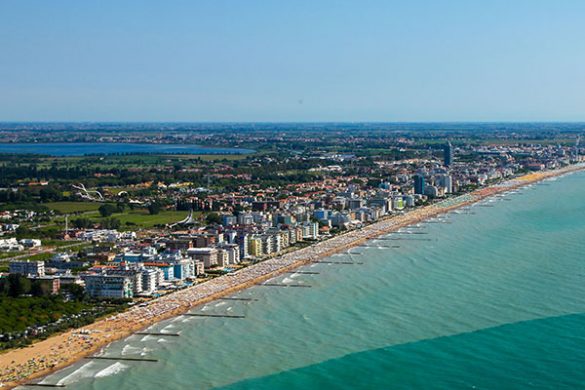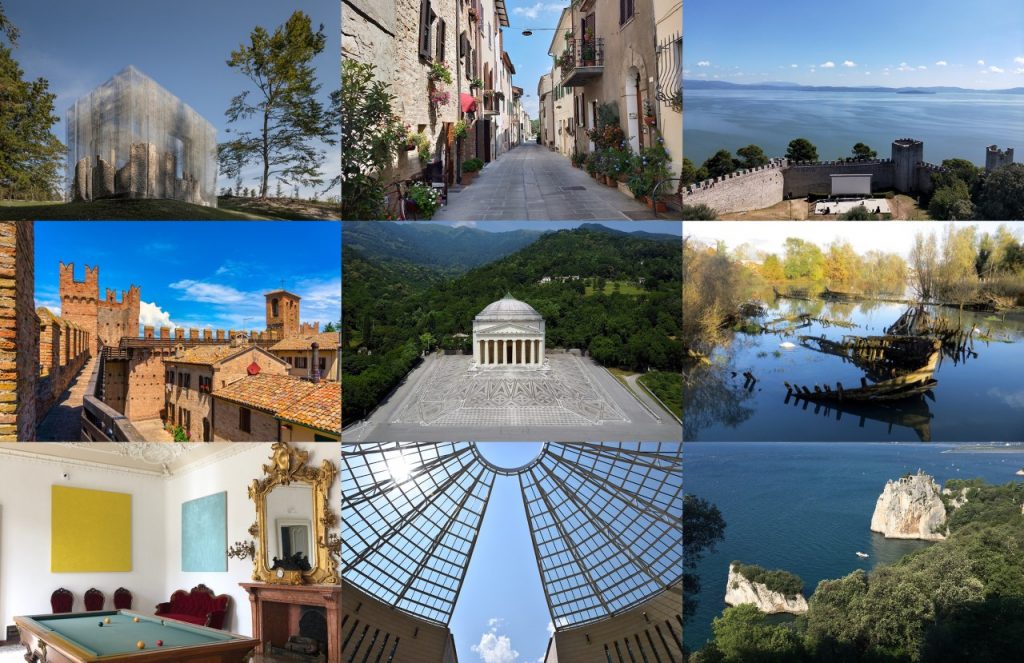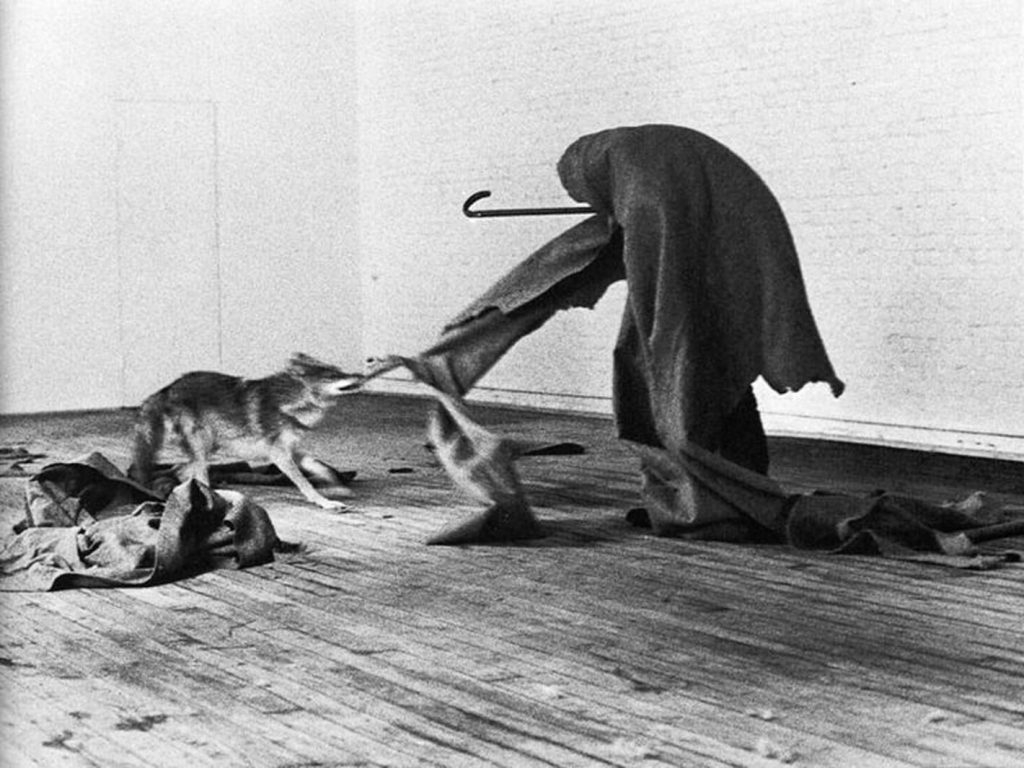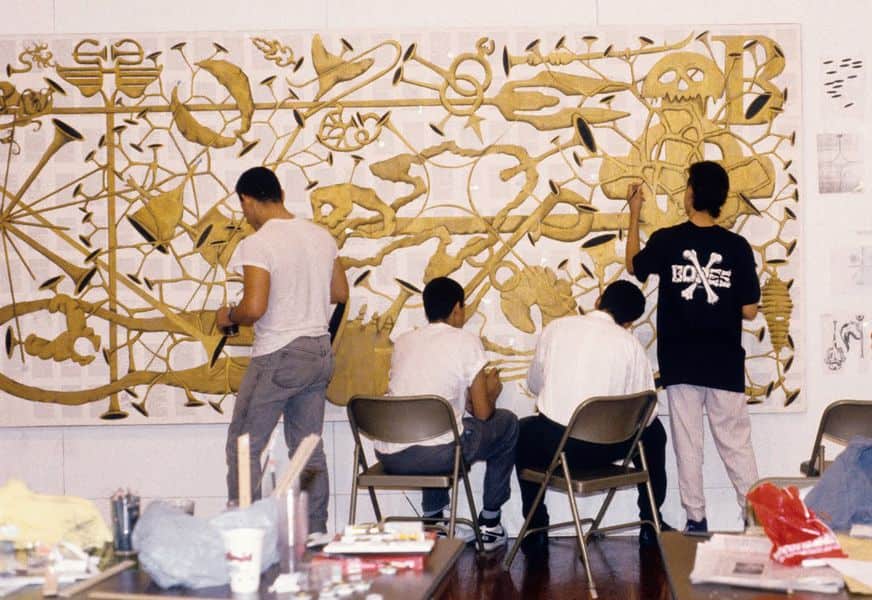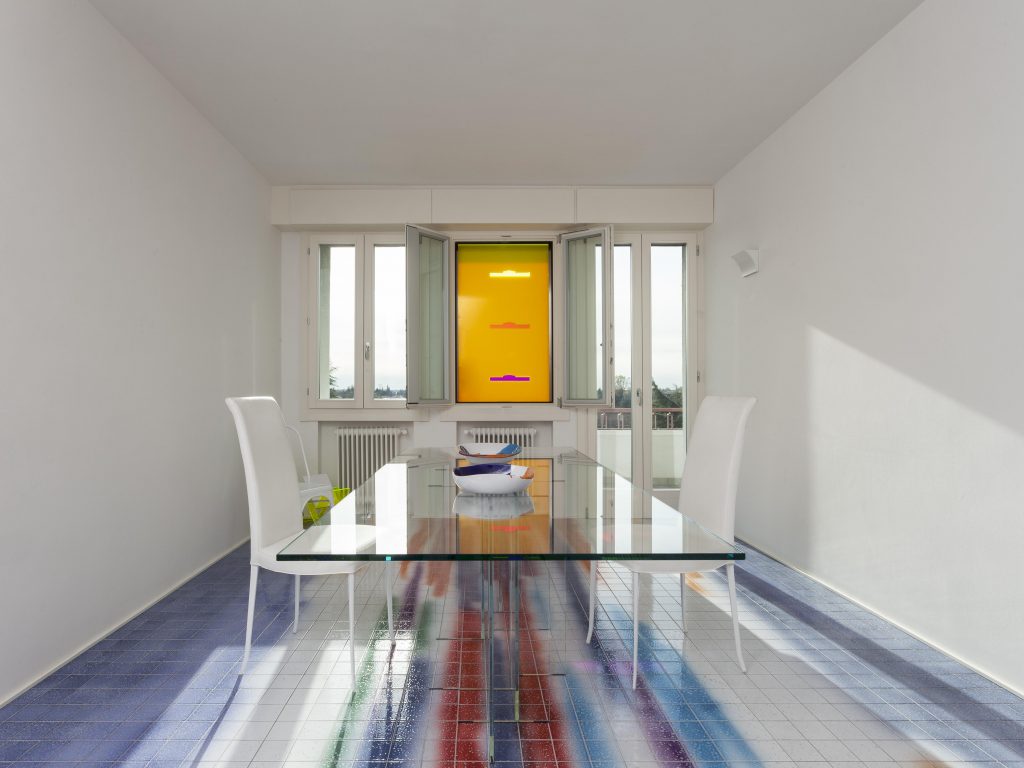In this Italian summer, in which holidays and events could be organized with some difficulties, and maybe also had to be delayed or cancelled, we suggest some destinations for a day trip: nine localities where to spend a weekend planned last minute or even just a Sunday afternoon.
The contributions of the member of our editorial staff are varied and personal, because, after all, summer is made to escape the routine, and sun and culture can be found in all forms.
Il Castello di Gradara
Filippo Pasquinucci

Love, that exempts no one beloved from loving,Seized me with pleasure of this man so strongly,That, as thou seest, it doth not yet desert me;With these words Francesca, in Dante’s Divine Comedy, describes a feeling so strong that it causes hers and her lover’s death at the hand of her husband. The readers assume that with these lines she refers to the September or 1829, when Gianciotto Malatesta stabbed his brother, Paolo, and his wife, Francesca da Polenta, in one of the halls of the Gradara Castle. Today, this mansion is one of the best preserved medieval structures in Italy, and thanks to the numerous additions that have been made by the various owners, it is also one of the most majestic.Now located 30 km from Rimini, on the border between the two regions of Marche and Emilia Romagna, it was built in a strategic position, being near the sea and granting a broad visual on the territory; today, it’s a great destination for a day trip or for a short vacation, to discover the activities that it offers: walking around in the town streets, admiring the breathtaking view of the walk on the fortification walls, enjoying a concert in an extraordinary background, strolling through the lavish halls that bring us the testimony of the indelible mark left by the powerful families of the time, such as the Malatesta, Sforza, Della Rovere, Borgia and the Medici. What can now be visited is the result of a massive work of restoration, which has been considered controversial under certain points of view, commissioned in 1920 by the last private owner, the engineer Umberto Zanvettori, thanks to his collaboration with architects such as Ferrari and Giovannoni.
Get up and visit Treviso!
Marco Battaglia
Treviso is an atypical city, distant from the italian clichè of the medieval village, nice and adorned: here, the Second World War left a permanent mark, evident in the alternation of buildings following the architectural style of the 50s and buildings coming directly from the medieval style, the only ones that survived the american bombing on 7 april 1944, that destroyed almost 90% of the old town. Maybe it’s because of the post war aesthetic, which out of necessity had to care more for the utility than for the beauty, that Treviso is now underestimated as a holiday destination, often labeled as ‘place near Venice’. Being trevigiano born and raised, I decided to structure the itinerary for an hypothetical day trip in the city where I live, hoping I can make you taste not only a good tiramisù, but also its cultural atmosphere and its beauty.
MORNING. With the first light breeze and torpor, a likeable activity is to stroll around the streets of the peaceful town centre; however, with the arrival of the summer heat, the search for cool places becomes vital: what better occasion to visit the Bailo Museum! The museum is dedicated to the trevigian Abbot Luigi Bailo, patron as well as a man of the cloth; the white and gray shades of this modern building form the background to the twentieth-century artworks of the permanent collection: the colours of the canvasses, among which Gino Rossi stands out, instil a sense of liveliness into the monochromatic setting, while the sculptures by Arturo Martini, characterized by by striking forms, stand out against the walls.
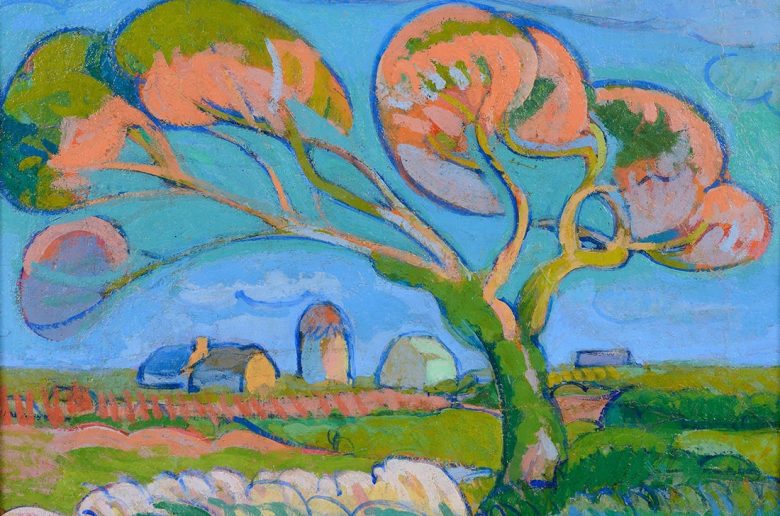
AFTERNOON. When walking goes back to being a pleasant activity, after the hottest hour have gone by, you can ex the old town to take the road of the Restera, a long pedestrian street running alongside the river Sile for tens of kilometers, diving in a natural park rich in plant and animal life. In addition to the stunning landscape, you can take a look at the Cemetery of the Burci, an archeological site stranded in a bend of the river, a relic from the past: ship remains lie on the bed of the river, lapped by his peaceful passing, and remind of the eventful history of this city, strictly linked to the neighbouring Venice, thanks to their rich trade relations.
EVENING. After such a dense trip, it’s worth refreshing oneself with a good glass of Prosecco. Why not do it at the Cantiere Art District? Surrounded by a suggestive location and by artworks and decor combining fashion and extravagance, you can eventually call it a day in the Treviso region, a place pulsing with culture, where history becomes the driving force for events organized thanks to the people’s love for their home, in the constant research for an identity separated from the cumbersome label of ‘cousin’ of Venice.
Arte Sella: a unique dialog between man’s genius and natural world
Irene Bertagnin
In the heart of Val di Sella, in the municipality of Borgo Valsugana, in the province of Trento is one of the most fascinating open-air museums of contemporary art, a place where nature and art blend together, the perfect destination for a summer trip capable of combining the pleasure of a walk in the woods and meadows of the cool Valsugana and a full immersion in art.
Arte Sella is an international exhibition of contemporary art, founded in 1986, a huge open air display of artworks made of stone, leaves, branches and logs, materials found right in the spot and that will eventually re-enter the biological cycle of nature. Arte Sella does not simply wish to be just an exhibition, but a creative process in which the work of every artist takes shape day by day: the artists are thus exposed to a constant dialogue with nature, and they have to accept that nature will be the one to complete their work: from nature the artists take inspiration and materials, but they let their creation be shaped, integrated, corrupted. Therefore, a place characterized by mutability, constantly changing its appearance, capable of surprising on every visit. A place to come back to, to find what changed from time to time and to reflect on our demand of controlling nature.
The exhibition, open 365 days a year, starts form the garden of Villa Strobele (hosting works by internationally renowned architects, such as Ettore Sottsass and Stefano Boeri), continues through the trail of Montura (4 km long, a stroll through the woods suitable for all), that leads the area area of the Malga Costa (where it’s possible to have lunch with excellent typical dishes): in this third area you can find the most monumental and suggestive artworks; the ones I find most noteworthy are Giuliano Mauri Vegetal Cathedral (over three thousand woven branches create a real gothic cathedral, with 3 naves of 80 columns, each containing a hornbeam seedling which will grow to replace the existing structured, destined to rot and disappear), Third Paradise – The trench of peace by Michelangelo Pistoletto and Symbiosis by Edoardo Tresoldi.
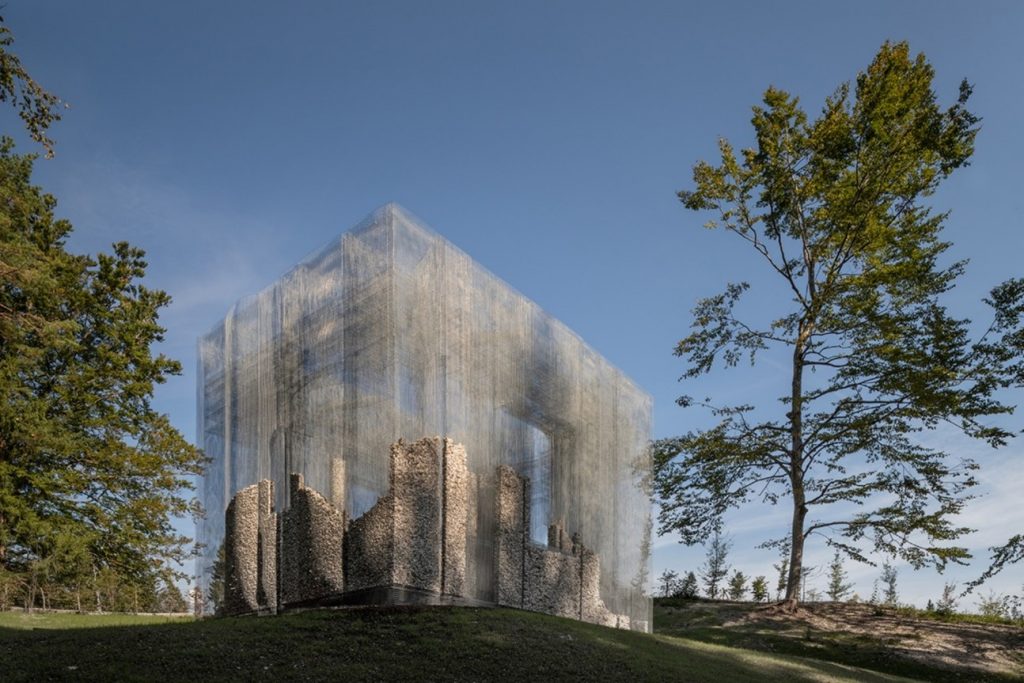
These artworks demand a full immersion of the visitors, inviting them to enter, linger, touch the materials, to challenge oneself in reading the surronding nature, and that also become background to concerts, performances, dance shows, conferences on ecology and sustainability: a 360 degree immersion.
You can find all the information on your visit and on events on www.artesella.it
Elegia Duinese
Miriam Schirato
The blue of the sea is so intense and the breeze so cool you’d like to stay at least one hour on the terrace of the castle, looking at the horizon, trying to see Trieste in the distance, while the gaze is continuously distracted and deflected by the reflex of the sun on the surface of the water, made choppy by the waves. But, on the other end, in the early morning, with the coast in the twilight and the haze of the first fogs, it is hard to distinguish anything in the gray and blue bands of colors matching the profile of the coast, where the Italian soil dives into the Adriatic sea sliding towards Croatia. This is the most vivid picture I can recall of my visit at the Duino Castle, a fort on an outcrop positioned toward the south that allows to take in at a glance the entire Gulf of Trieste, in a 360 degree landscape including the lagoon to the west and to the north the barren shape of the Karst.
Universally known for being the place of birth of Bohemian poet Reiner Maria Rilke’s elegy collection, Duino elegies, Duino, with his castle, does not make demands, and offers itself to the visitor almost as a place coming from a fairytale, precisely because of its literary fame which precedes it but nonetheless gives no anticipations: the boldest the city of Duino ventured was to name after the Romantic poet its stunning walk coasting the natural reserve of the cliffs of Duino. Walking across it, immersed in the scent of the pine and in the buzzing of the cicadas, one does not feel so distant from that panic sense (the sense of the totality) that will be later on celebrated by the next generation of poets.
Built in 1398 on the remains of a Roman outpost already reconverted to a fortress during the tenth century, the castle has a series of points of interest: the sixteenth-century tower, the opulent garden leaning out on a 40 metrescliff, the stairwell by Palladio and the forte-piano that was played by Litszt in person (one of the many and most illustrious hosts of the counts Thurn un Taxis, that have been holding the possession of the castle for over four hundred years). The ruins of the eleventh century fort forming the background to all the views from the garden perfectly embody the sense of this jewel on the coast of Trieste: their melancholic appearance reminds of the famous paintings by Böcklin, but this analogy is soon transfigured because of the light that radiates over them. From all this comes that the whole of the experience of this place is an authentic surprise for the eyes and the heart: it’s unexpected how enchanting it is, and it enacts all the intense flavor of the last splendours of the Austro-Hungarian empire, without squandering it through time or space.
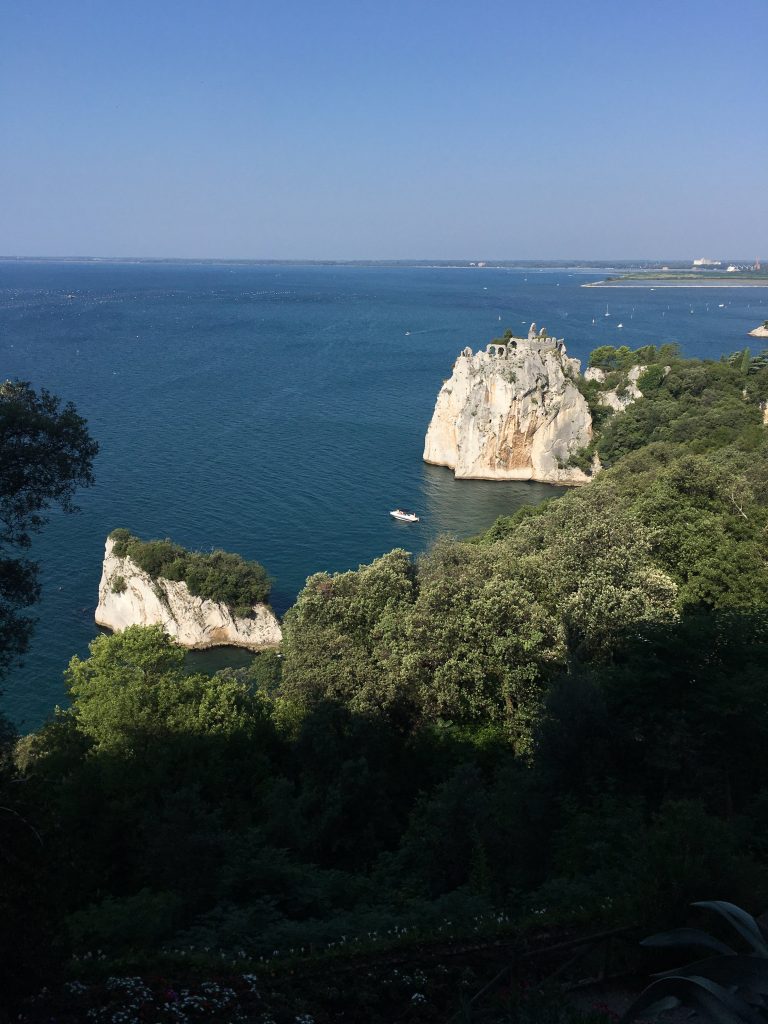
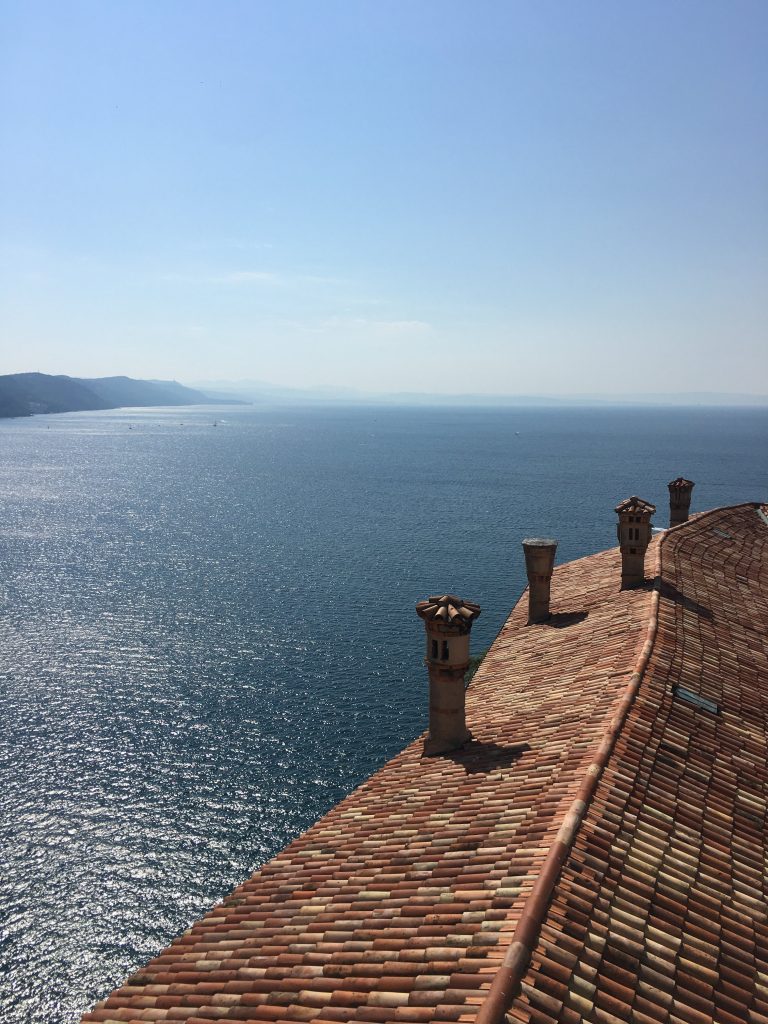
A stop in Possagno
Pietro Battagliarin
The continental climate of the Venetian lagoon has increasingly accustomed us to a humidity that has few equals in the Italian peninsula, making it often necessary to escape from the sense of suffocation. A trip out of town to the hinterland would be the best option, but where? In order to avoid an excessive change towards the cooler and breezy mountain temperatures, there is a solution that literally has an eye on the mountains and another on the plain: Possagno.
A small town not too far from Treviso, Possagno is known for being the birthplace of the greatest representative of neoclassical sculpture Antonio Canova, whose brilliant mind gave birth to the project for the temple which, from the main hill, towers over the town.
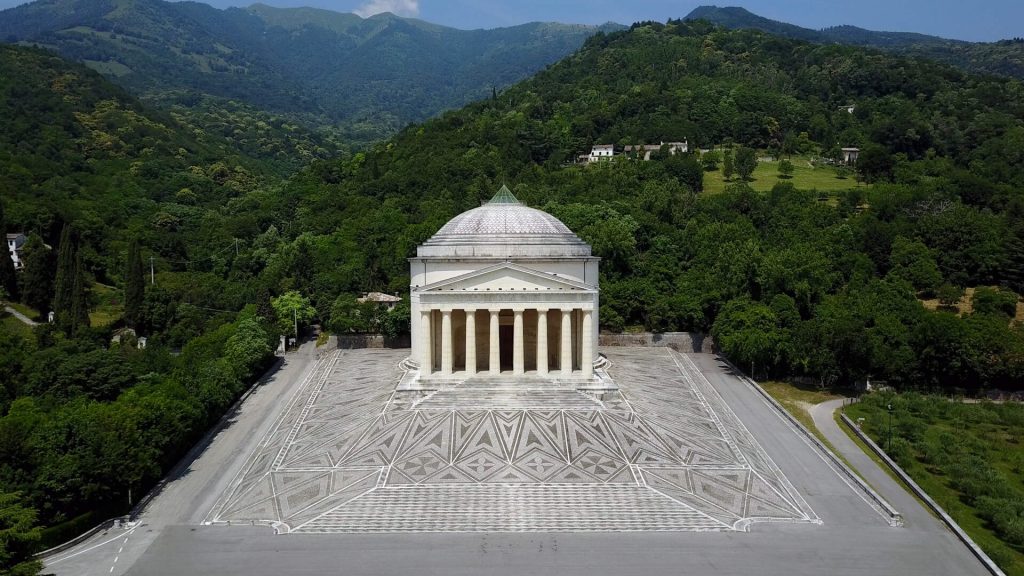
The etymology of the name is said to come from the Latin pausaneus, literally “resting place”, and no other term could be more appropriate to describe it: this small town turns out to be a place to stop and leave behind the chaotic city. A possible way to rest in this case is not given only by the various and pleasant walks in the green, but above all by the production of Canova himself: the sculptor, in fact, in addition to his home, had held here a considerable part of his corpus scultoreum, as well as the library, which has now become the historical archive. The space that fully summarizes the sculptor’s work is the Gypsotheca, the collection of plaster sketches and casts then translated into marble by the master; it is a place that ranks as a theater of the neoclassical style in Italy, as if it were a giant collection of sketches in plaster supporting the definitive works.
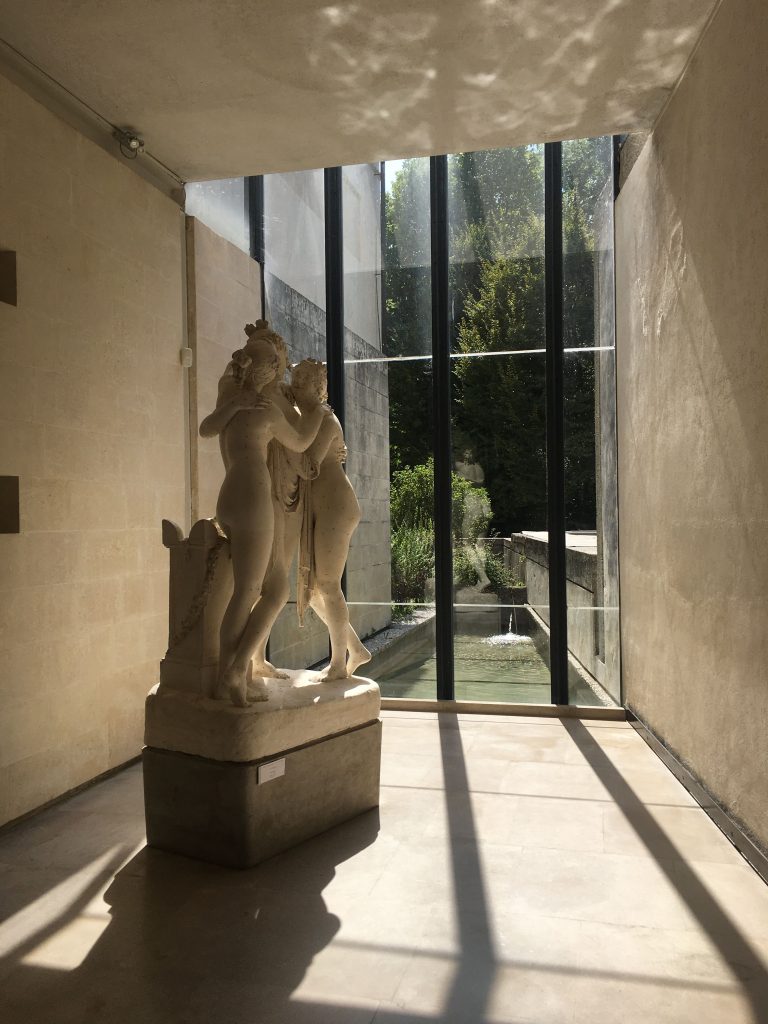
Here Canova’s spirit fully comes back to life, his pure and immaculate reinterpretation of classical sculpture (still based on the erroneous ideal of the whiteness of classical figures) dialogues with the rooms where an ethereal air is breathable, untouched by time and illuminated by a light that, especially following the installation by the genius of Carlo Scarpa in the 1950s, gives new life not only to the plaster but also to the unusual clay sketches. A hymn to the importance of the sketch, the idea, the intuition, which Canova’s sculpture brought to the world of art, illustrating its embryonic and fundamental phases.
Therefore, visiting Possagno is more than an experience but a rediscovery, a new way to observe, equipped with a privileged lens that the metropolitan city could never provide us with, the environment of one of the greatest prodigies that history of sculpture and art have ever seen, the “new Phidias” who shows us the incipits of his creations, a few steps from our home.
Una “cartolina” da Castiglione al lago
Sara Serpilli
The three parallel roads cutting through the town suggest, at first glance, its Roman origin: Castiglione del Lago, a strategic point in ancient times, is a real jewel embedded among the municipalities of Orvieto, Chiusi and Arezzo, a perfect destination for a summer trip after the removal of the covid restrictions. The former marquisate falls into the domain of Perugia and is deprived of its strategic importance, thus turning into a buffer state at the border of the Grand Duchy of Tuscany and, as a matter of fact, a possession of the State Church, despite maintaining a high cultural independence. It is the Vatican itself that takes into its own hands the promotion of the Accademia degli Insensati (the Academy of the Senseless), where it was usual for scholars and local nobles to gather in a sort of literary coterie moving around the town, while renowned painters and sculptors left their artistic footprints. Some of the most recommended stops are the Palazzo della Corgna, an Umbrian palace commissioned by the Corgna family commissioned to the famous architect Jacopo Barozzi da Vignola and frescoed by Pomarancio with Ascanius’ deeds and mythological scenes; the Church of the Maddalena, the most important place of worship in the whole region of Umbria, hosting the perugian Madonna Enthroned with Child, mistakenly considered one of Raffaello’s works; lastly, the Rocca del Leone (the Stronghold of the Lion), a medieval fortification built on an Etruscan acropolis between the 12th and the 13th century with decorations similar to the ones embellishing the famous Fountain in the old town of Perugia. The fort, especially if visited on a sunny day: a nice walk all along the perimeter offers a priceless experience and a flawless spot for the shooting a postcard photo: a breathtaking view of the surrounding landscape, where the green Umbrian hills stand framed by the bright azure of the lake.
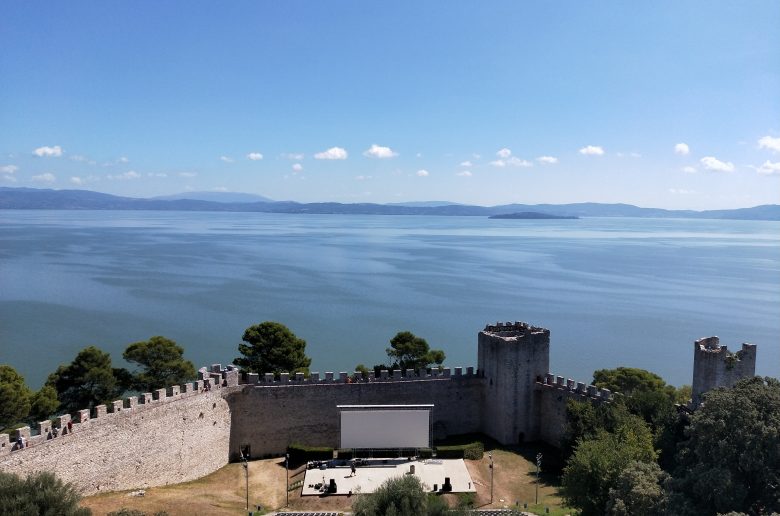
Villa Panza a Varese
Filippo Cortese
Villa Panza in Varese, a structure belonging to FAI, is an eighteenth-century mansion hosting on of the most well-known American art collections, in addition to being home to a large number of temporary exhibitions which contribute to enrich the exhibition layout and the monumental Italian garden surrounding the estate.
The turning-point for the future of Villa Panza is to be seen at the beginning of the 50s, when count Giuseppe Panza, who had assigned the villa to be a country residence, decided to create a collection of 20th century art pieces reflecting the American taste and including artists of international relevance.
The collection numbers 150 artworks of American artists dealing with the leitmotiv of light and color, displayed so as to create a bridge between the old and the new, between the eighteenth-century style and the taste of the new twentieth-century artistic tendencies. The mansion also displays Renaissance decor and collections of African and pre-Columbian art. In the numerous rooms, pieces by In my opinion, the jewel of Villa Panza is located in the rustic wing, hosting a gallery of site-specific environmental art works, among which the names of Dan Flavin, James Turrell e Robert Irwin stand out. The theme of these halls is light in all its forms, from Flavin’s bright neon lights to Turrell’s the open architecture, which benefit from the reflexes of natural light.
The estate is also surrounded by a massive Italian garden hosting temporary installations by Italian and international artists. At the present time, the garden displays artworks by Chiara Dynys and Sean Shanahan, dealing with an introspective analysis of the geometries existing among the various colors and blocks of colours.The Panza Collection is a hidden treasure, whose name is not popular among young people, but it certainly is ready to be discovered. A visit of the duration of a day or even half a day is what I suggest, if you find yourself in Varese or near Milan: you won’t be disappointed.
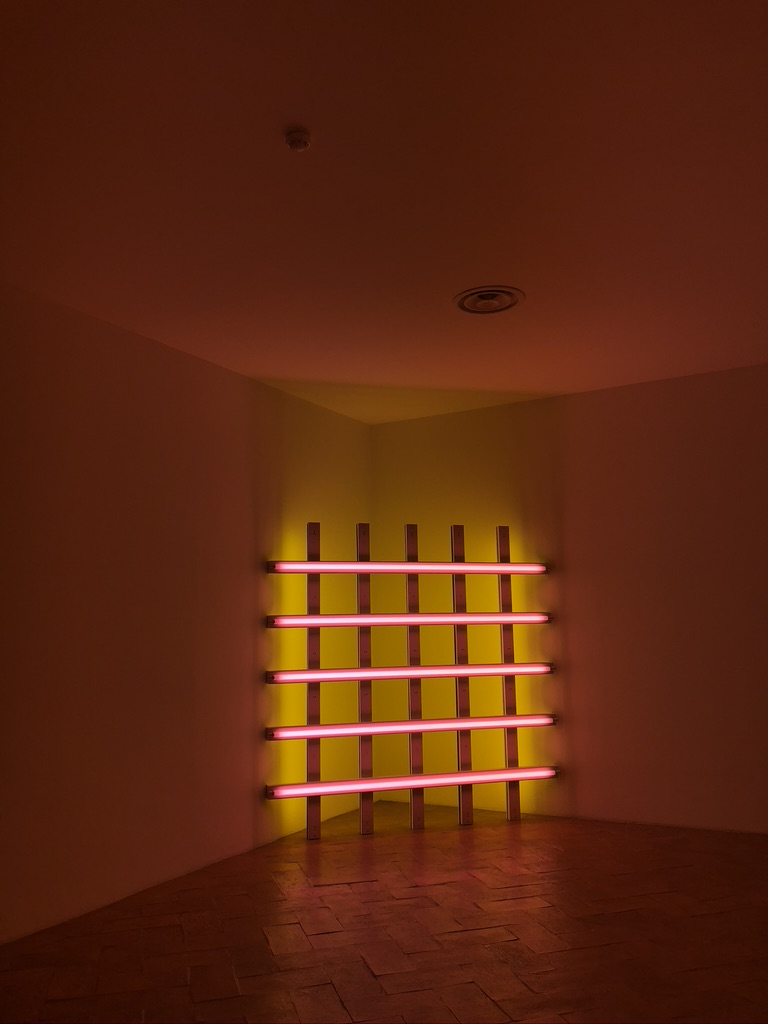

Rovereto and the MART
Camilla Fabretti
Nestled in between the hills and vineyards of the Vallagarina valley, set at the very heart of it, lays the small but charming city of Rovereto. Perhaps often overshadowed by the more touristic towns of Trento and Bolzano, Rovereto is instead a place which, drawing on its cultural heritage, can be considered a melting pot of epochs and of emotions. If on one side the town center is full of the pomp of the eighteenth century that can be admired in the elegant palazzos of Corso Bettini, on the other medieval influences cannot be ignored in the village of Castelbardo while, in the House of the Podestà, the shadows of the Serenissima domain are still very much alive – since the regime had made the town its main source of sustenance thanks to the abundance of timber that could be easily transported back to Venice via the currents of the Adige.
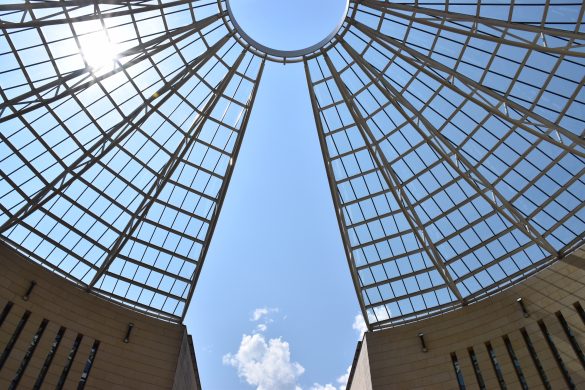
Despite this, the true jewels of Rovereto are treasured in the bizarre edifice perfectly positioned in the middle of the city: inaugurated in 1987, the MART, Museum of Modern and Contemporary Art, was never born to become yet another regional museum centre but was rather conceived in a way that could render it the cultural hub of choice for the territory, a sort of contemporary agora where art, education, show business and nature could fuse themselves in an unprecedented unicum that, availing itself of its 20.000 strong heritage of masterpieces, aims to suggest a dynamic and original journey through the last 150 years of art history, occasionally pushing itself even further back.
Indeed to infuse a new and courageous boost to post Covid initiatives, the MART museum has re-launched its agenda with a tripartite cultural offering which divides itself in a series of temporary exhibitions that provide the viewer with unprecedented and original dialogues between old masters and artists belonging to present times, rendering itself the ideal out of town daily trip. Along with the permanent collection, the exhibits on view this summer are: “Botticelli. Il suo tempo. Il nostro tempo”, that illustrates the lasting influence of the Renaissance master on the cultural forma mentis of artists and creators up until the modern times; “Dalì, De Chirico e Picasso. Dialogo con Raffaello”, characterized by a dialogue between the three giants and, lastly, “Giovanni Boldini. Il piacere”, the solo exhibit centered on the multifaceted artist that was considered the “greatest painter of the last century” by Gertrude Stein and that he’s here recounted in the genius of his career, entirely devolved to photographing via his color palette the billowing romanticism of the society of the fin de siècle.
To cap off the day a visit to the textile and drawing borough where the piece de resistance is represented by the house of futuristic artist Depero – the man known for his pointy techniques and his vivacious palettes through which he realized, amongst others, the iconic posters for the original Bitter Campari campaign – and, lastly, a trip to the Osteria al Pettirosso, just a few steps away from the cultural crucible that is the atmosphere of the city.
Jesolao Meravigliao
Michelangelo Morello
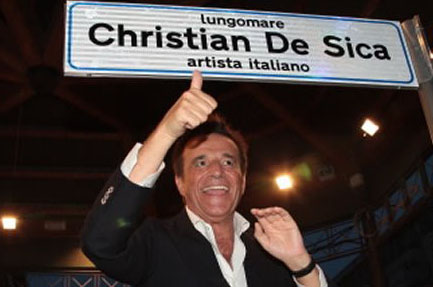
Not only a mojito at Capannina and one of Thorns’s mixes played by the console of the Muretto, not only a cup of vanilla ice cream at the ice-cream shop Colombina and a walk along the waterfront dedicated to Christian de Sica: dear reader, remember that Jesolo, the Miami of Veneto, as it is often named, offers a large number of cultural events and spaces.
Despite being labeled by the general public’s collective imagination as a place dedicated to sunbathing from 10 am to 5 pm, with a pause just for the happy hour in one of the many bars along the beach, the majestic and always fascinating sand sculptures that have been shaped for more than twenty years in Piazza Brescia are often forgotten: its a themed exposition (this year Darwin Returns to the City”. Humanity gives way to nature) that attracts hundreds of tourists every summer.
Jesolao Meravigliao, as it is often called by the average citizen of Marghera who on a saturday morning usually sits in the traffic for two hours to travel the 30 kilometers separating him from the most requested beaches of the region, hosts a series of exhibitions such as the Factory of Science, an interactive space designed for both children and adults to learn, with the support of technology, the laws of nature. Another famous cultural attraction is the Sea Life Aquarium, a suggestive route moving alongside 36 tanks hosting more than 5000 species of water animals, coming from oceans, mountain streams or from the Venetian lagoon. In addition to the permanent exhibition, the municipality of Jesolo also commits, every summer, to the organisation of events designed to keep the city alive after sunset; among the various squares dotting via Bafile its easy to find concerts, circus shows or markets.
